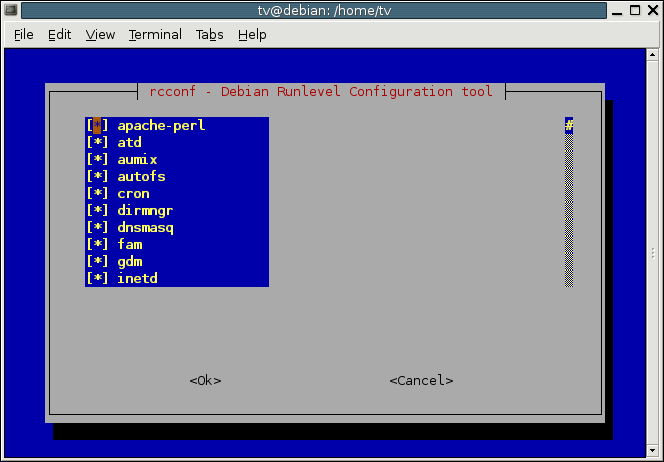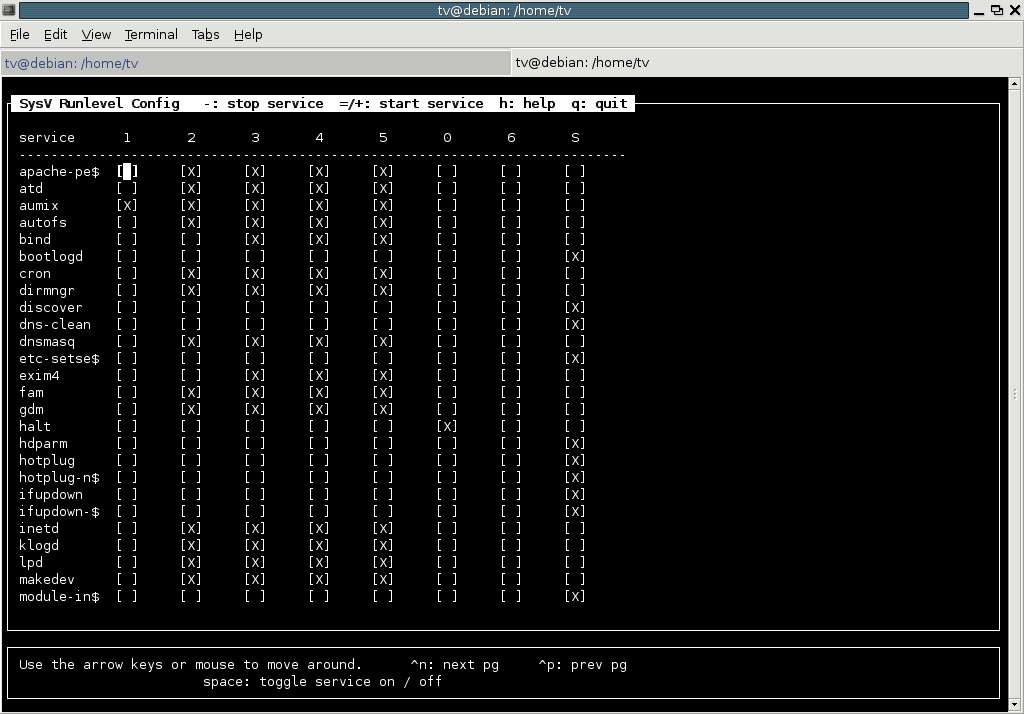Under Debian Linux ( and most other distros) startup files are stored in /etc/init.d/ directory and symbolic linked between /etc/rcX.d/ directory exists. Debian Linux (Red Hat/ Fedora) uses System V initialization scripts to start services at boot time from /etc/rcX.d/ directory. Debian Linux comes with different utilities to remove unwanted startup file:
(A) rcconf
It is a console based interactive utility that allows you to control which services are started when the system boots up or reboots. It displays a menu of all the services which could be started at boot. The ones that are configured to do so are marked and you can toggle individual services on and off. To start rconf, login as root user and type rcconf
# rcconf

Debian rcconf – a console based utility to control startup services
Select the service you would like to enable or disable.
(B) sysv-rc-conf is yet another tool for for SysV like init script links under Debian Linux. To start sysv-rc-conf, login as root user and type sysv-rc-conf:
# sysv-rc-conf

Debian sysv-rc-conf – a console based advanced utility to control startup services
Select the service you would like to enable or disable.
Both sysv-rc-conf and rcconf are best tools to use on Remote Debian Linux or when GUI is not available, they are just like ntsysv command under Red Hat Linux.
(C) You can also use update-rc.d script as follows (update-rc.d removes any links in the /etc/rcX.d directories to the script /etc/init.d/service):
# update-rc.d -f {SERVICE-NAME} remove
For example to stop xinetd service at boot time, type the command as follows:
# update-rc.d -f xinetd remove
